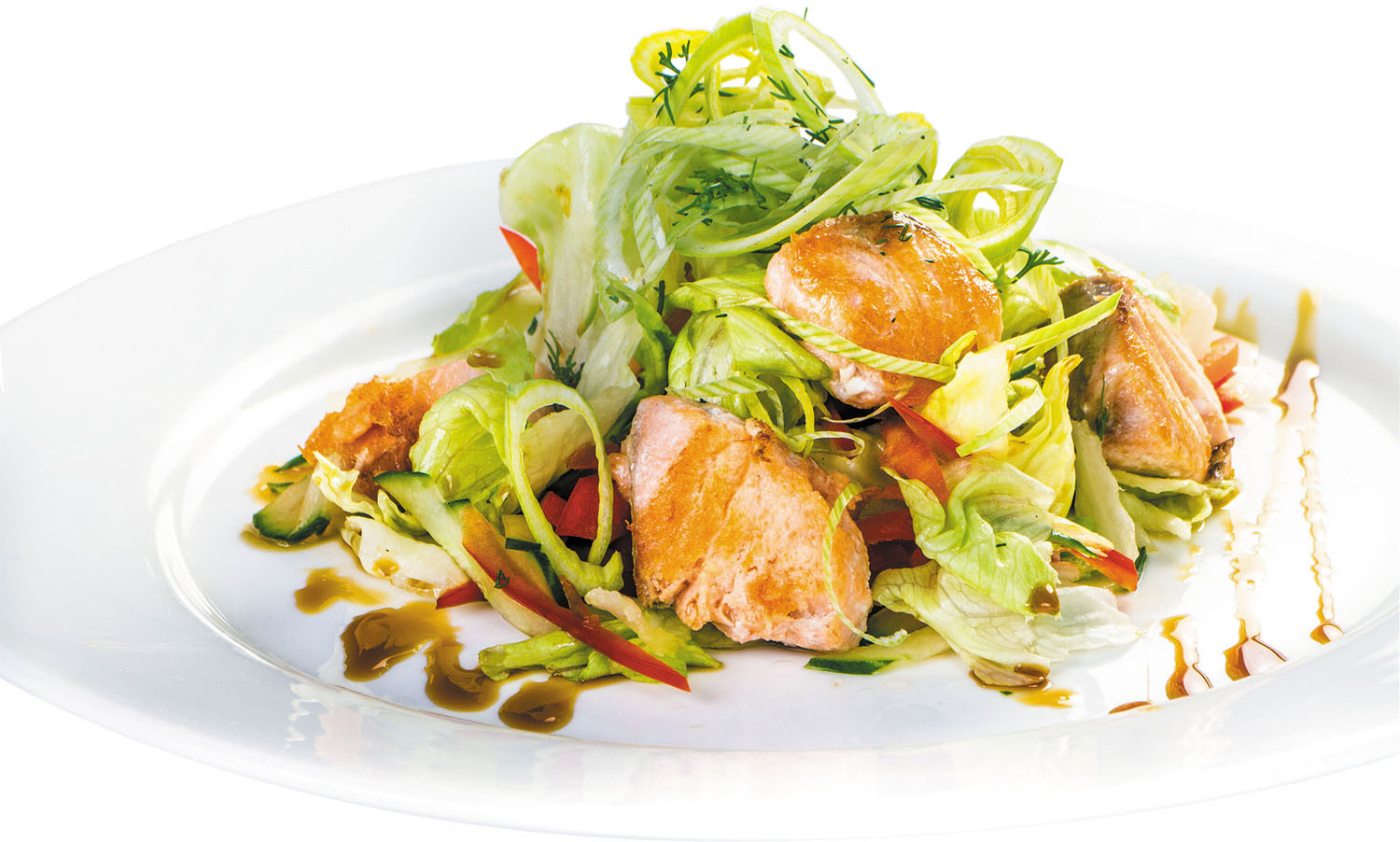The health benefits of this diet are well known. Here are some tips to fit it into your lifestyle.

The Mediterranean diet is already something of a star in the health world. Numerous studies have linked this dietary pattern with health benefits ranging from a lower risk of heart disease to a reduction in certain cancers. Now there may be another benefit to add to the list: improvements to the gut microbiome, the name for the 100 trillion or so bacteria and other microorganisms that live in a person’s digestive tract.
A study published online February 17 by the journal Gut looked at a group of more than 600 older adults in five countries. The authors found that those who switched to the Mediterranean diet and did the best job sticking to it for a year showed positive changes in their gut microbiome. What’s more, the changes were linked to a number of improvements in health, including less risk of frailty and better cognitive function. The researchers also found a drop in blood markers that can indicate chronic inflammation inside the body.
The idea that dietary changes can positively influence the gut microbiome and potentially promote healthier aging is good news, said the study authors, because as people age they tend to eat a less varied diet, which can result in undesirable changes to the microbiome. Researchers have linked these changes to an increase in inflammation and other health problems.
More than an eating styleThe benefits of a traditional Mediterranean lifestyle don’t stop with food. There other reasons why this region traditionally scores high on measures of health. “The Mediterranean culture embraces the importance of eating and cooking with family and friends,” says Katherine McManus, director of the Department of Nutrition at Harvard-affiliated Brigham and Women’s Hospital. Cooking with and eating with your family or friends can also be an important component of a healthy lifestyle. Whenever possible, choose food that follows your local seasonal patterns. If a food isn’t in season, try something else that is, says McManus. Try to buy from local vendors; your nearest farmer’s market is a good place to start. Last, but not least, physical activity is key to the Mediterranean lifestyle. Dancing, biking, or a simple walk are all ways to be active each day. |
Understanding the Mediterranean diet
“The nice thing about the Mediterranean diet is that it really has stood the test of time,” says Katherine McManus, director of the Department of Nutrition at Harvard-affiliated Brigham and Women’s Hospital. The diet has been shown to be safe and healthy to follow in the long term.
The traditional Mediterranean-type diet is based off an eating pattern historically followed in the countries found in the Mediterranean region — particularly Crete, Greece, and southern Italy. Its meals are built on a foundation of vegetables, fruits, and whole grains. Meat is consumed more sparingly than in a traditional Western-style diet. Instead, protein sources come primarily from fish and plants, with smaller amounts from lean poultry and red meat. Moderate amounts of cheese and yogurt round out the diet, along with healthy helpings of olive oil, nuts, seeds, and legumes.
In general, the goal is to eat
- lots of plant foods, including fruits, vegetables, whole grains, nuts and legumes
- olive oil as the principal source of fat
- moderate amounts of cheese and yogurt each day
- moderate amounts of fish and poultry, ideally a few times a week
- limited amounts of red meat.
A day in the life of the Mediterranean dietHow can you turn your American-style diet into one that follows the Mediterranean model? Below are some daily meal ideas consistent with a Mediterranean-style approach. |
||
|
Meal |
Instead of this |
Try this |
|
Breakfast |
Scrambled eggs with white toast and bacon |
Egg omelet with mushrooms, spinach, and onions, cooked in olive oil, with a slice of whole-grain bread |
|
Sugary cereal |
Cup of plain Greek yogurt, topped with nuts and fresh berries |
|
|
Pancakes |
Whole-grain bread topped with low-fat cheese and sliced tomato, drizzled with a little extra-virgin olive oil |
|
|
Lunch |
Sandwich on a white roll |
Greek salad made with chopped mixed greens, bell peppers, red onions, feta cheese, and olives, dressed with olive oil and lemon |
|
White pasta salad |
Grain salad made with farro, chopped cucumbers and tomatoes, chickpeas, and an olive oil dressing |
|
|
Slice of cheese pizza |
Slice of pizza topped with peppers, mushrooms, and part-skim mozzarella cheese |
|
|
Dinner |
Grilled steak, green beans, and white rice |
Grilled kabobs with shrimp, cherry tomatoes, pearl onions, and mushrooms, over a bed of quinoa, with a salad topped with chopped nuts |
|
Chicken with gravy, carrots, and mashed potatoes |
Chicken stir-fried in olive oil with broccoli, peppers, and green beans, served over brown rice |
|
|
Fish sticks and coleslaw |
Grilled salmon with a side of bulgur and roasted zucchini |
|
Adopting a Mediterranean-style diet
Interested in giving this dietary pattern a shot? Most Americans can make the shift by making small changes to their daily eating habits, says McManus. “I think that the premise of the Mediterranean diet is that it’s mostly plant-based, so I like people to start by asking, ‘Where am I today? How frequently do I consume animal-based food or red meat and poultry?'” says McManus. “Once you know where you are starting, you’ll know how much you need to cut back and substitute.” How big a change this will be really depends on your baseline.
To accomplish this, McManus recommends making a number of changes to your daily diet, as follows.
Add olive oil. This healthy fat should play a starring role in a Mediterranean diet plan. Substitute it whenever you can for other types of fat you might be using on a regular basis. For example, if you normally use butter in cooking or on your toast, switch to olive oil instead, says McManus. And instead of a bottled salad dressing, substitute a simple splash of olive oil and vinegar, or whip up a dressing of your own using olive oil as the base.
Grab some nuts. When you’re looking for a simple snack, instead of a processed offering that comes from a bag, reach instead for a daily handful of unsalted mixed nuts. Or try to add nuts into salads or sauces.
Eat more salad. An easy way to get in some extra veggies every day is to begin or end each meal with a salad. In many Mediterranean countries, salad is eaten after the main course.
Skip sugary drinks. Instead, opt for a simple glass of water.
Build in legumes. Add beans or peas into salads and soups, or use them as a main dish instead of meat. Legumes are also great mixed into pasta dishes. Aim to get a serving at least three times a week.
Shift to whole grains. Opt for whole grains instead of refined carbo-hydrates. For example, choose whole-grain bread or pasta instead of white versions.
Image: © Nordling/Getty Images
Subscribe to Harvard Health Online for immediate access to health news and information from Harvard Medical School.
Disclaimer:
As a service to our readers, Harvard Health Publishing provides access to our library of archived content. Please note the date of last review or update on all articles. No content on this site, regardless of date, should ever be used as a substitute for direct medical advice from your doctor or other qualified clinician.


